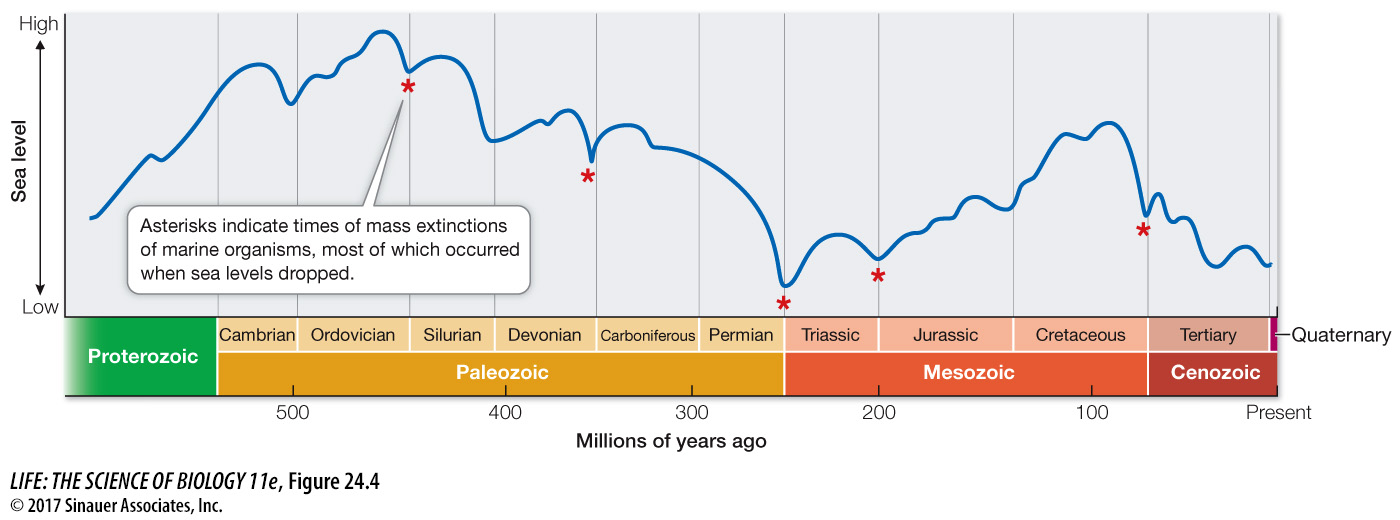Earth’s climate has shifted between hot and cold conditions
512
Through much of Earth’s history, the climate was considerably warmer than it is today, and temperatures decreased more gradually toward the poles. At other times, Earth was colder than it is today. Periodic rapid drops in sea level throughout the history of Earth have resulted mainly from increased global glaciation (Figure 24.4). Many of these drops in sea level were accompanied by mass extinctions—

Question
Q: Why do cooler global temperatures result in lower sea levels?
When Earth cools, more of its water is tied up in ice on land, in the form of glaciers. Thus there is less water in the oceans, so sea levels are lower.
Earth’s cold periods were separated by long periods of milder climates. Because we are living in one of the colder periods, it is difficult for us to imagine the mild climates that were found at high latitudes during much of the history of life. The Quaternary period has been marked by a series of glacial advances, interspersed with warmer interglacial intervals during which the glaciers retreated.
“Weather” refers to the daily events at a given location, such as individual storms and the high and low temperatures on a given day. “Climate” refers to long-
We are currently living in a time of *rapid climate change caused by a buildup of atmospheric CO2, primarily from the burning of fossil fuels by human populations. We are reversing the energy transformations accrued in the burial and decomposition of organic material that occurred (especially) in the Carboniferous, Permian, and Triassic, which gave rise to the fossil fuels we are using today. But we are burning these fuels over a few hundred years, rather than the many millions of years over which those deposits accumulated. The current rate of increase in atmospheric CO2 is unprecedented in Earth’s history. A doubling of the atmospheric CO2 concentration—
*connect the concepts Today’s rapid climate changes are having an enormous effect on populations of many living organisms, as discussed in Key Concept 58.2.